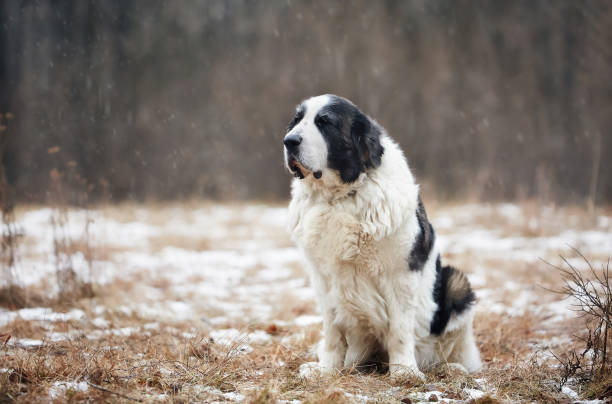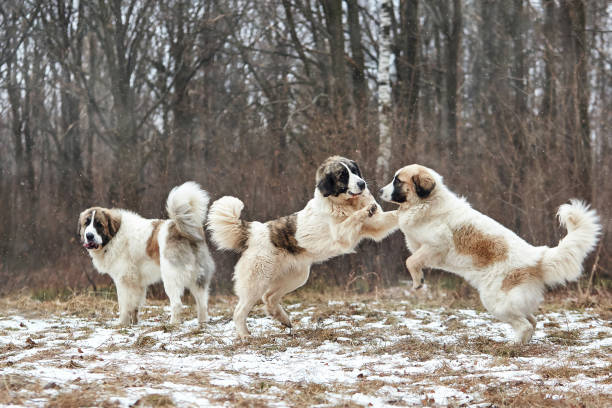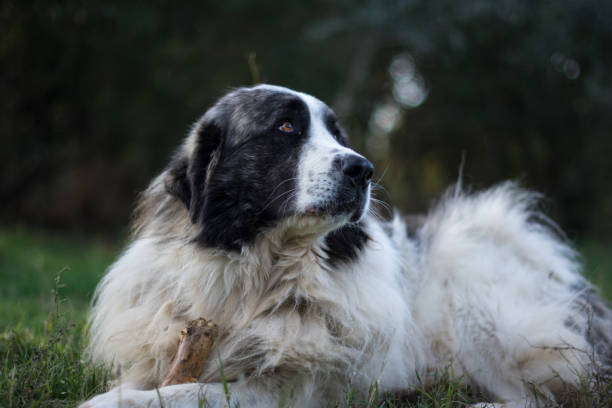Pyrenean Mastiff

Breed History:
The Pyrenean Mastiff is a majestic guardian breed that originated in the Aragonese Pyrenees of northeastern Spain. Historically developed to protect livestock from predators like wolves and bears, it was bred for strength, endurance, and loyalty. This breed is believed to descend from ancient Molosser dogs brought to the Iberian Peninsula by the Phoenicians and later refined by local shepherds to handle harsh mountain climates and tough working conditions.
Though less known internationally than some other mastiff breeds, the Pyrenean Mastiff holds cultural significance in its native region. With its calm demeanour and imposing presence, it served as a fearless defender of flocks for centuries, especially during long seasonal migrations across the mountains.
Considering adopting a Pyrenean Mastiff or a similar giant breed? Check out our page "How to look after a Great Dane" detailing what to consider before adopting and our recommended products for a Great Dane and other giant dog breeds.
|
Gender |
Height |
Weight |
|
Male |
77–81 cm |
60–100 kg |
|
Female |
72–75 cm |
55–85 kg |
Size – Giant
Life Expectancy: 10–13 years

Breed Appearance:
The Pyrenean Mastiff is a large, robust dog with a noble and powerful appearance. It has a broad head, strong jaw, and expressive dark eyes that exude kindness and intelligence. Its ears are medium-sized and drop close to the cheeks, adding to its gentle expression.
The thick, double-layered coat is dense and medium to long, offering protection from the elements. It features a white base with distinct patches of colour, commonly in shades of black, brindle, fawn, or grey. Its body is well-proportioned, with a deep chest, straight back, and strong limbs, conveying its capability as a working guardian. A long, bushy tail typically hangs low but can rise in alert.
Breed Type – Livestock Guardian/Family:
Originally bred as a livestock guardian, the Pyrenean Mastiff possesses an instinctive protectiveness combined with a calm, affectionate nature. It is extremely loyal and gentle with its family, including children, while remaining wary of strangers or potential threats. This makes it both a loving companion and an effective guardian.
Its temperament is steady and noble, rarely aggressive without cause. With proper socialisation, the breed becomes a well-mannered and dependable house dog that maintains a strong, watchful presence. While it thrives in open spaces, it can adapt to a large home with a yard if its physical and mental needs are met.

Training:
The Pyrenean Mastiff is intelligent and eager to please, but also independent by nature, reflecting its heritage as a decision-making guardian. Training should begin early, emphasising consistency, patience, and positive reinforcement. Harsh or domineering methods can cause resistance or anxiety in this sensitive breed.
Socialisation is crucial to ensure the dog remains well-adjusted and tolerant, especially with unfamiliar people or other animals. Basic obedience training should be established early due to the dog’s large size, which can otherwise make management difficult. This breed responds best to gentle guidance from a confident and calm handler.
Health & Care:
The Pyrenean Mastiff is a generally healthy and resilient breed, though its large size makes it prone to some health conditions common among giant breeds. These include hip and elbow dysplasia, bloat (gastric torsion), and progressive retinal atrophy.
Maintaining a healthy weight is critical to avoid stress on the joints. Owners should monitor for early signs of orthopaedic issues and provide joint-supportive nutrition. Regular veterinary check-ups, a high-quality diet, and moderate exercise tailored to the dog’s age and size are key to its well-being.

Living Conditions:
This breed thrives in rural or suburban homes with space to roam, ideally with a securely fenced yard. The Pyrenean Mastiff is not well-suited to apartment living due to its size and guardian instincts. It prefers a calm environment and close interaction with its family, often seeking companionship over isolation.
Despite its working roots, the breed adapts well to a relaxed household as long as it has regular outdoor time. It tolerates cold weather well, thanks to its thick coat, but may struggle in hot, humid climates. Adequate shade and hydration are essential during warm seasons.
Exercise:
While not overly energetic, the Pyrenean Mastiff requires regular, moderate exercise to stay fit and mentally stimulated. Daily walks, light hikes, and supervised playtime in a secure area help maintain its health and prevent boredom.
Puppies should not be overexerted due to their growing joints, and adult dogs benefit from low-impact activities rather than intense exercise. The breed enjoys roaming and surveying its territory, but care should be taken to prevent escape or wandering, as its protective instincts can be triggered.
Grooming:
The Pyrenean Mastiff’s thick coat needs regular maintenance to remain healthy. Weekly brushing is typically sufficient to remove loose hair and prevent matting, but daily grooming may be needed during heavy seasonal shedding in spring and autumn.
Bathing should be infrequent, only when necessary, to avoid stripping the coat’s natural oils. Ears should be checked and cleaned regularly to prevent infections, and nails should be trimmed to avoid overgrowth. Regular dental care, such as brushing teeth a few times a week, helps maintain oral hygiene.

Advantages:
-
Excellent natural guardian with strong protective instincts
-
Calm, gentle, and affectionate with family members and children
-
Low prey drive; generally good with other animals when socialised early
-
Beautiful, majestic appearance with a dignified presence
-
Intelligent and independent thinker with deep loyalty
-
Adaptable to family life in the right environment
Disadvantages:
-
Not suitable for small homes or apartments due to size and exercise needs
-
Requires early training and socialisation to manage protective instincts
-
Thick coat sheds seasonally and needs regular grooming
-
Can be stubborn or independent during training; patience is necessary
-
Prone to joint issues and bloat, requiring attentive care and feeding
-
May be aloof or suspicious of strangers without proper socialisation

